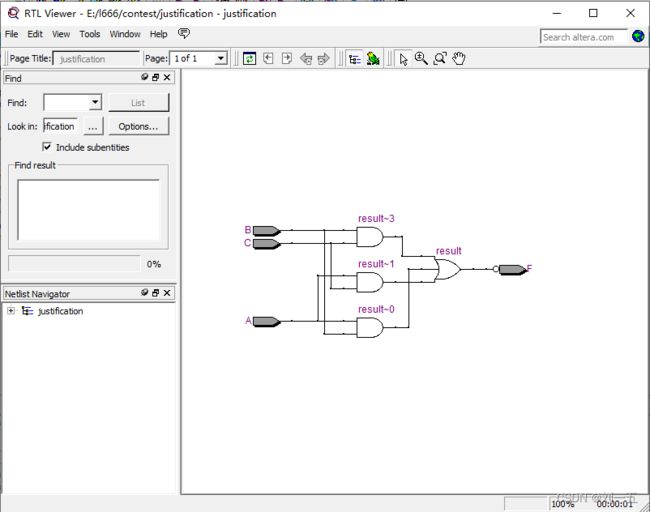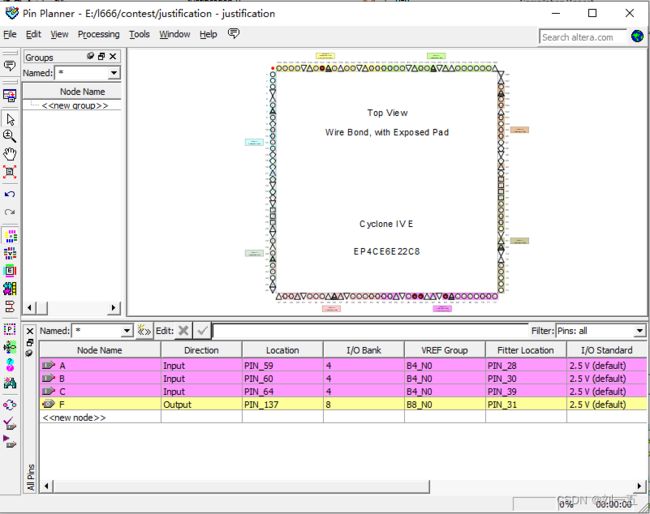- 区块链赋能:用Python开发去中心化投票系统
Echo_Wish
Python!实战!区块链python去中心化
区块链赋能:用Python开发去中心化投票系统在这个互联网迅猛发展的时代,投票系统不仅仅停留在政务领域,它已成为社区治理、企业决策甚至区块链DAO(去中心化自治组织)中重要的机制。然而,传统投票系统往往集中化,存在信任和数据安全问题。区块链技术以其不可篡改性和透明性为去中心化投票提供了理想的解决方案。在这篇文章中,我将通过Python语言,结合区块链智能合约,教你如何从零开发一个去中心化的投票系统
- Parrot OS 6.3 发布!全面提升安全性,新增先进工具,带来更高性能
wljslmz
Linux技术linuxParrotOS
2025年2月,全球知名的安全和隐私为核心的Linux发行版——ParrotOS迎来了其最新版本——ParrotOS6.3。作为一款基于Debian的多功能操作系统,ParrotOS旨在为安全专家、开发人员以及关注隐私的用户提供强大的功能支持。ParrotOS6.3版本在性能、工具更新、硬件支持等方面进行了一系列优化,凭借其更加稳定的安全性,最新的工具包,以及对硬件兼容性的大幅提升,ParrotO
- DevOps中集成自动化测试的具体案例
Zachary AI
CICD相关devops运维
在DevOps中集成自动化测试的具体案例可以从多个角度进行分析,包括金融行业、分布式系统、大型企业等不同领域的实践。以下是几个具体的案例:金融行业的DevOps实践:在金融行业中,DevOps被广泛应用于提升软件开发和运营的效率。例如,通过解析后台接口代码日志格式,自动化生成接口测试案例,解决了接口自动化测试过程中各交易输入值难以确定的问题,从而提高了接口测试效率[14]。此外,农行手机银行系统存
- 【Spring AI】基于专属知识库的RAG智能问答小程序开发——代码逐行精讲:核心交互函数及RAG知识库构建
un_fired
spring人工智能java
系列文章目录【SpringAI】基于专属知识库的RAG智能问答小程序开发——完整项目(含完整前端+后端代码)【SpringAI】基于专属知识库的RAG智能问答小程序开发——代码逐行精讲:核心ChatClient对象相关构造函数【SpringAI】基于专属知识库的RAG智能问答小程序开发——代码逐行精讲:核心交互函数及RAG知识库构建文章目录系列文章目录前言1.Service层知识库构建与检索函数详
- 关于STM32如何选择:HAL与标准库的抉择及初学者建议
笑靥藏情.
stm32嵌入式硬件单片机
STM32是意法半导体(STMicroelectronics)推出的一系列基于ARMCortex-M内核的32位微控制器,因其高性能、多功能性和成本效益而广受嵌入式系统开发者的欢迎。对于初学者而言,学习STM32编程时面临的第一个重要抉择往往是如何选择编程方式:是使用硬件抽象层(HAL),还是选择标准外设库(StandardPeripheralLibrary)?本文将围绕这一问题展开,详细比较HA
- Android开发
哈哈哈隔
android
AndroidAdapter是将数据绑定到UI界面上的桥接类比如:当lambada中只有一个参数时,可以用it指代@Target和@Retention是由Java提供的元注解,所谓元注解就是标记其他注解的注解,下面分别介绍https://blog.csdn.net/javazejian/article/details/71860633#%E5%A3%B0%E6%98%8E%E6%B3%A8%E8%
- 某智慧医养服务平台Uploads存在任意文件上传漏洞(DVB-2025-8968)
Byp0ss403
漏洞复现集合文件上传web安全
免责声明本文所描述的漏洞及其复现步骤仅供网络安全研究与教育目的使用。任何人不得将本文提供的信息用于非法目的或未经授权的系统测试。作者不对任何由于使用本文信息而导致的直接或间接损害承担责任。如涉及侵权,请及时与我们联系,我们将尽快处理并删除相关内容。0x01产品介绍广西金中软件集团有限公司前身成立于1999年,隶属于广西电信下的三产公司金中信息产业有限公司,是一家集软件开发、网站建设、网络工程、系统
- Java+Selenium+Cucumber自动化测试框架:高效软件测试的利器
测试渣
javaselenium
一、引言在当今软件开发的快速迭代的背景下,确保软件质量和功能的正确性变得愈发关键。自动化测试作为一种提高测试效率、降低成本的有效手段,受到了广泛的关注。Java作为一门功能强大且广泛应用的编程语言,与Selenium和Cucumber相结合的自动化测试框架,为软件测试领域带来了诸多优势。本文将深入探讨这一自动化测试框架,包括其简介、各组件的作用、环境搭建、实际应用案例以及未来发展趋势等内容。二、J
- 鸿蒙HarmonyOS 5.0开发:应用程序包-HAP
炫酷盖茨猫先生
鸿蒙5.0开发ArkTS组件ArkUI框架harmonyos华为前端androidArkUIArkTS鸿蒙系统
往期鸿蒙全套实战文章必看:(文中附带鸿蒙全栈学习资料)鸿蒙开发核心知识点,看这篇文章就够了最新版!鸿蒙HarmonyOSNext应用开发实战学习路线鸿蒙HarmonyOSNEXT开发技术最全学习路线指南鸿蒙应用开发实战项目,看这一篇文章就够了(部分项目附源码)HAPHAP(HarmonyAbilityPackage)是应用安装和运行的基本单元。HAP包是由代码、资源、第三方库、配置文件等打包生成的
- numpy学习笔记2:ones = np.ones((2, 4)) 的详解
宁宁可可
#机器学习#Python基础与进阶numpypython开发语言
numpy学习笔记2:ones=np.ones((2,4))的详解np.ones()是NumPy中用于创建全1数组的核心函数,其用法和参数与np.zeros()类似,但生成的数组元素值全部为1。以下是详细解释:1、语法numpy.ones(shape,dtype=float,order='C')作用:生成一个指定形状和数据类型的全1数组。参数:shape:数组的形状,以元组形式传递(如(2,4)表
- 精准测试:软件开发中的高效质量保障利器
霍格沃兹软件测试开发
精准化测试测试用例安全性测试测试覆盖率模块测试selenium测试工具压力测试
全面解析软件测试开发:人工智能测试、自动化测试、性能测试、测试左移、测试右移到DevOps如何驱动持续交付在现代软件开发中,测试效率与测试质量直接影响产品竞争力。精准测试作为一项兼具效率与精度的创新测试方法,已经成为众多企业提升软件质量的重要手段。本篇文章围绕精准测试的落地实施、对质量指标的提升、数据统计与效果评估方法以及如何提高投入产出比进行全面解读,帮助企业掌握精准测试的价值与实践路径。精准测
- 2025年开发者工具全景图:IDE与AI协同的效能革命
He.Tech
ide人工智能
2025年开发者工具全景图:IDE与AI协同的效能革命(基于CSDN、腾讯云等平台技术文档与行业趋势分析)一、核心工具链的务实演进与配置指南主流开发工具的升级聚焦于工程化适配与智能化增强,以下是2025年开发者必须掌握的配置技巧:1.VSCode:性能优化与远程协作标杆核心特性:CUDA核心利用率分析:通过NVIDIANsight插件优化GPU计算任务,需在settings.json中添加:"ns
- HarmonyOS开发5.0【应用程序包】
爱桥代码的程序媛
鸿蒙开发学习笔录harmonyos分布式鸿蒙开发鸿蒙鸿蒙系统openharmony程序包
对比HarmonyOS与Android的应用程序包HarmonyOS的应用程序包与Android的应用程序包在多个方面存在一些不同之处,主要体现的方面:包格式(从包的后缀名可以看出来)HarmonyOS:使用.hap格式作为应用程序包。这个格式是HarmonyOS的专有格式,包含了应用的所有资源和代码。Android:使用.apk格式作为应用程序包。APK文件包含了应用的代码、资源、清单文件等。架
- python-flask复习(一)
胖虎是只mao
python-webpython函数pythonpythonflask
一、Python现阶段三大主流Web框架Django、Tornado、Flask对比Django主要特点是大而全,集成了很多组件(例如Models、Admin、Form等等),不管你用得到用不到,反正它全都有,属于全能型框架,通常用于大型Web应用,由于内置组件足够强大所以使用Django开发可以一气呵成,优点是大而全,缺点也就暴露出来了,这么多的资源一次性全部加载,肯定会造成一部分的资源浪费;T
- Demo发布- ClkLog客户端集成 uni-app
sdk开源软件数据分析埋点
前言在上一期推文中【Demo发布-ClkLog客户端集成-ReactNative】,我们与大家分享了ReactNative的集成demo。本期,我们将继续介绍ClkLog集成uni-app的demo。uni-app允许开发者编写一套代码,然后可以编译到iOS、Android、H5以及各种小程序等多个平台。因此,本次demo中将涵盖上述所有平台,并且我们会详细说明集成过程中遇到的难点及解决方案。un
- Demo发布 | ClkLog成功集成Unity3D
前言在Clklog完成ReactNative和uni-app集成Demo后,一个游戏行业新客户提出了使用Unity3D开发的集成问题。对此,我们与客户分别进行了测试。客户使用神策Andriod原生SDK在Android端暴露接口给Unity3D的方式,验证了使用ClkLog进行数据采集的可行性。同时,ClkLog联合合作伙伴对神策Unity3DSDK(安卓端、IOS端、MacOS)进行了深入测试,
- Ubuntu Qt: no service found for - “org.qt-project.qt.mediaplayer“
wkm956
qt开发语言ubuntu
1、前言在一次项目过程中,因项目需求,需要将windows开发的Qt项目迁移到ubuntu系统中,且在某个功能项中需要播放音频,在windows系统中能够正常运行,但在ubuntu系统中却显示defaultServiceProvider::requestService():noservicefoundfor-"org.qt-project.qt.mediaplayer"错误,在网上查找资料后解决问
- React性能优化的深度解析:React.memo和useMemo的真相与误区
今天也想MK代码
持续学习持续总结react.js性能优化前端
引言在React应用开发中,性能优化始终是开发者关注的重点。随着应用规模的扩大,组件渲染效率成为影响用户体验的关键因素。React.memo和useMemo是React提供的两个常用性能优化API,但它们常常被误解和滥用。本文将深入剖析这两个API的工作原理、适用场景,并通过实际案例分析它们的优缺点,帮助开发者做出明智的性能优化决策。技术原理React.memo与useMemo的本质区别React
- python pip报错:Preparing metadata (pyproject.toml) ... error
我有一个魔盒
其他pythonpip开发语言
环境:win11(Python3.9.13)原因:想安装低版本python,结果安装成了32位的,但是依赖包基本都是64位的。解决办法:重装64位python(可能还需要VisualStudio内安装“使用C++的桌面开发”)异常报错:Collectingmatplotlib~=3.0(fromgradio)Usingcachedhttps://pypi.tuna.tsinghua.edu.cn/
- 开发人员的编程心理学
开发
向开发人员提供建议的编程心理学我之前写过,编程有两个受众:CPU和你的编程伙伴。还有一些优秀的文章,比如《面向苦难编程》,可以帮助你在编程时调整目标——让它工作、让它漂亮、让它快速,这是那篇文章的建议。“让它工作、让它漂亮、让它快速”是绝妙的编程建议,也是我从第一次读它开始就一直牢记在心的建议。编程建议程序首先以CPU为目标——即“使其工作”。1合理的编程建议然后建议针对您的编程伙伴,即必须维护或
- Axure高级功能深度解析一一高效原型设计的利器
招风的黑耳
Axure
Axure作为一款专业的原型设计工具,凭借其强大的功能和灵活的交互设计,成为了众多设计师和开发者的首选。本文将深入探讨Axure的高级功能,帮助大家更好地利用这款工具,提升原型设计的效率和质量。一、Axure高级功能概览•变量管理:介绍局部变量和全局变量的使用场景、命名规则以及如何在原型设计中实现数据传递和交互逻辑。•动态面板:详细解析动态面板的工作原理,包括如何创建、编辑和管理动态面板状态,以及
- 【使用 Element UI 实现手动上传文件:FormData 追加文件和其他参数,支持单文件覆盖上传】
Hermione_log
vue.jselementui前端
在开发Web应用时,文件上传是一个常见的需求。ElementUI提供了强大的el-upload组件,可以轻松实现文件上传功能。本文将详细介绍如何使用ElementUI实现以下功能:手动触发文件上传:用户选择文件后,点击按钮手动上传。使用FormData追加文件和其他参数:将文件和其他表单数据一起提交。单文件覆盖上传:只允许上传一个文件,新文件会覆盖旧文件。1.实现思路为了实现上述功能,我们需要以下
- 数据重放和数据倒灌的意思一样吗
赛恩斯
android
数据重放与数据倒灌在机制上有相似性,但设计目的和适用场景存在本质差异:1.核心定义对比维度数据倒灌数据重放技术场景LiveData特有的现象,新观察者自动接收最后一次数据更新78通用异步流机制(如Flow的StateFlow/SharedFlow),允许新订阅者获取历史数据45设计意图LiveData的默认行为,旨在确保观察者始终获取最新数据38开发者主动配置的数据保
- HarmonyOS NEXT一行代码实现任意处弹窗
前言从Api9开始开发鸿蒙的大佬应该被自定义弹窗折腾得够呛,到目前为止我能想到的自定义弹窗方案有以下几种promptAction.openCustomDialog(options:CustomDialogOptions)(该方案@Builder装饰的视图(builder参数)必须定义在组件内部)CustomDialogController+CustomDialog(该方案CustomDialogC
- 2025React岗位前端面试题180道及其答案解析,看完稳了,万字长文,持续更新....
祈澈菇凉
前端
1.什么是React?它的主要特点是什么?答案解析:React是一个用于构建用户界面的JavaScript库,主要用于构建单页应用。其主要特点包括:组件化:React应用由多个可重用的组件组成,便于管理和维护。虚拟DOM:React使用虚拟DOM提高性能,通过最小化实际DOM操作来优化渲染过程。单向数据流:数据在组件之间以单向流动的方式传递,简化了数据管理和调试。声明式编程:React允许开发者以
- WPF使用MVVM模式开发
pluto li
.net.net
本文用到的有:WPF(.net5)Microsoft.Toolkit.Mvvm按钮不带参数/带参数点击事件绑定文本框Text绑定,点击事件绑定步骤如下:创建wpf项目:WpfMVVM创建Views、ViewModels两个文件夹nuget添加Microsoft.Toolkit.Mvvm在ViewModels文件夹添加类MainViewModelusingMicrosoft.Toolkit.Mvvm
- 聊聊关于Python与人工智能那些事
小G-biu-
python人工智能tensorflow
Python与人工智能:介绍Python在人工智能方面的应用Python是一种广泛使用的编程语言,也是人工智能领域中最受欢迎的语言之一。Python提供了许多用于构建和训练人工智能模型的库和框架。本文将介绍一些常见的人工智能技术以及Python在这些技术中的应用。OpenAIOpenAI是一个非营利组织,旨在推动人工智能的发展并促进其对人类的利益。OpenAI通过开发人工智能技术、研究人工智能的影
- 组件化开发之02 cocoapods 远程私有库
dzb1060545231
iOS开发专栏免费
上一讲我们讲到了如何创建本地私有仓库,关于远程私有库就是我们按照cocoapods的一些规范创建一个自己的私有索引文件库和一个自己的私有库代码仓库,私有索引库存放我们私有库的podspec索引文件,后边更改了私有库版本内容,就将私有库的podsepc文件提交到这个私有索引库仓库里.接下来我会具体的讲解如何去生成这样一个远程私有索引库仓库,方便公司内部开发人员去使用这个远程私有库.///这是笔者电脑
- numpy学习笔记10:arr *= 2向量化操作性能优化
宁宁可可
#机器学习#Python基础与进阶numpy学习笔记
numpy学习笔记10:arr*=2向量化操作性能优化在NumPy中,直接对整个数组进行向量化操作(如arr*=2)的效率远高于显式循环(如foriinrange(len(arr)):arr[i]*=2)。以下是详细的解释:1.性能差异的原理(1)底层实现不同显式循环(错误示范):Python的for循环是解释执行的,每次迭代需要动态解析变量类型、执行函数调用等操作。对每个元素的操作会触发多次Py
- Python前端开发
PITSU
正则表达式htmlcss3mysql
Python前端开发1.前端三剑客(HTML,CSS和JavaScript)1.1HTML1.1.1HTML简介HyperTextMark-upLanguage,指的是超文本标记语言;html是开发网页的语言;html中的标签大多数都是成对出现的,格式:1.1.2HTML结构第一行是文档声明部分HTML:分为页头,页身和页脚。标签大部分是成对出现1.1.3第一行文档声明部分HTML在vscode中
- TOMCAT在POST方法提交参数丢失问题
357029540
javatomcatjsp
摘自http://my.oschina.net/luckyi/blog/213209
昨天在解决一个BUG时发现一个奇怪的问题,一个AJAX提交数据在之前都是木有问题的,突然提交出错影响其他处理流程。
检查时发现页面处理数据较多,起初以为是提交顺序不正确修改后发现不是由此问题引起。于是删除掉一部分数据进行提交,较少数据能够提交成功。
恢复较多数据后跟踪提交FORM DATA ,发现数
- 在MyEclipse中增加JSP模板 删除-2008-08-18
ljy325
jspxmlMyEclipse
在D:\Program Files\MyEclipse 6.0\myeclipse\eclipse\plugins\com.genuitec.eclipse.wizards_6.0.1.zmyeclipse601200710\templates\jsp 目录下找到Jsp.vtl,复制一份,重命名为jsp2.vtl,然后把里面的内容修改为自己想要的格式,保存。
然后在 D:\Progr
- JavaScript常用验证脚本总结
eksliang
JavaScriptjavaScript表单验证
转载请出自出处:http://eksliang.iteye.com/blog/2098985
下面这些验证脚本,是我在这几年开发中的总结,今天把他放出来,也算是一种分享吧,现在在我的项目中也在用!包括日期验证、比较,非空验证、身份证验证、数值验证、Email验证、电话验证等等...!
&nb
- 微软BI(4)
18289753290
微软BI SSIS
1)
Q:查看ssis里面某个控件输出的结果:
A MessageBox.Show(Dts.Variables["v_lastTimestamp"].Value.ToString());
这是我们在包里面定义的变量
2):在关联目的端表的时候如果是一对多的关系,一定要选择唯一的那个键作为关联字段。
3)
Q:ssis里面如果将多个数据源的数据插入目的端一
- 定时对大数据量的表进行分表对数据备份
酷的飞上天空
大数据量
工作中遇到数据库中一个表的数据量比较大,属于日志表。正常情况下是不会有查询操作的,但如果不进行分表数据太多,执行一条简单sql语句要等好几分钟。。
分表工具:linux的shell + mysql自身提供的管理命令
原理:使用一个和原表数据结构一样的表,替换原表。
linux shell内容如下:
=======================开始
- 本质的描述与因材施教
永夜-极光
感想随笔
不管碰到什么事,我都下意识的想去探索本质,找寻一个最形象的描述方式。
我坚信,世界上对一件事物的描述和解释,肯定有一种最形象,最贴近本质,最容易让人理解
&
- 很迷茫。。。
随便小屋
随笔
小弟我今年研一,也是从事的咱们现在最流行的专业(计算机)。本科三流学校,为了能有个更好的跳板,进入了考研大军,非常有幸能进入研究生的行业(具体学校就不说了,怕把学校的名誉给损了)。
先说一下自身的条件,本科专业软件工程。主要学习就是软件开发,几乎和计算机没有什么区别。因为学校本身三流,也就是让老师带着学生学点东西,然后让学生毕业就行了。对专业性的东西了解的非常浅。就那学的语言来说
- 23种设计模式的意图和适用范围
aijuans
设计模式
Factory Method 意图 定义一个用于创建对象的接口,让子类决定实例化哪一个类。Factory Method 使一个类的实例化延迟到其子类。 适用性 当一个类不知道它所必须创建的对象的类的时候。 当一个类希望由它的子类来指定它所创建的对象的时候。 当类将创建对象的职责委托给多个帮助子类中的某一个,并且你希望将哪一个帮助子类是代理者这一信息局部化的时候。
Abstr
- Java中的synchronized和volatile
aoyouzi
javavolatilesynchronized
说到Java的线程同步问题肯定要说到两个关键字synchronized和volatile。说到这两个关键字,又要说道JVM的内存模型。JVM里内存分为main memory和working memory。 Main memory是所有线程共享的,working memory则是线程的工作内存,它保存有部分main memory变量的拷贝,对这些变量的更新直接发生在working memo
- js数组的操作和this关键字
百合不是茶
js数组操作this关键字
js数组的操作;
一:数组的创建:
1、数组的创建
var array = new Array(); //创建一个数组
var array = new Array([size]); //创建一个数组并指定长度,注意不是上限,是长度
var arrayObj = new Array([element0[, element1[, ...[, elementN]]]
- 别人的阿里面试感悟
bijian1013
面试分享工作感悟阿里面试
原文如下:http://greemranqq.iteye.com/blog/2007170
一直做企业系统,虽然也自己一直学习技术,但是感觉还是有所欠缺,准备花几个月的时间,把互联网的东西,以及一些基础更加的深入透析,结果这次比较意外,有点突然,下面分享一下感受吧!
&nb
- 淘宝的测试框架Itest
Bill_chen
springmaven框架单元测试JUnit
Itest测试框架是TaoBao测试部门开发的一套单元测试框架,以Junit4为核心,
集合DbUnit、Unitils等主流测试框架,应该算是比较好用的了。
近期项目中用了下,有关itest的具体使用如下:
1.在Maven中引入itest框架:
<dependency>
<groupId>com.taobao.test</groupId&g
- 【Java多线程二】多路条件解决生产者消费者问题
bit1129
java多线程
package com.tom;
import java.util.LinkedList;
import java.util.Queue;
import java.util.concurrent.ThreadLocalRandom;
import java.util.concurrent.locks.Condition;
import java.util.concurrent.loc
- 汉字转拼音pinyin4j
白糖_
pinyin4j
以前在项目中遇到汉字转拼音的情况,于是在网上找到了pinyin4j这个工具包,非常有用,别的不说了,直接下代码:
import java.util.HashSet;
import java.util.Set;
import net.sourceforge.pinyin4j.PinyinHelper;
import net.sourceforge.pinyin
- org.hibernate.TransactionException: JDBC begin failed解决方案
bozch
ssh数据库异常DBCP
org.hibernate.TransactionException: JDBC begin failed: at org.hibernate.transaction.JDBCTransaction.begin(JDBCTransaction.java:68) at org.hibernate.impl.SessionImp
- java-并查集(Disjoint-set)-将多个集合合并成没有交集的集合
bylijinnan
java
import java.util.ArrayList;
import java.util.Arrays;
import java.util.HashMap;
import java.util.HashSet;
import java.util.Iterator;
import java.util.List;
import java.util.Map;
import java.ut
- Java PrintWriter打印乱码
chenbowen00
java
一个小程序读写文件,发现PrintWriter输出后文件存在乱码,解决办法主要统一输入输出流编码格式。
读文件:
BufferedReader
从字符输入流中读取文本,缓冲各个字符,从而提供字符、数组和行的高效读取。
可以指定缓冲区的大小,或者可使用默认的大小。大多数情况下,默认值就足够大了。
通常,Reader 所作的每个读取请求都会导致对基础字符或字节流进行相应的读取请求。因
- [天气与气候]极端气候环境
comsci
环境
如果空间环境出现异变...外星文明并未出现,而只是用某种气象武器对地球的气候系统进行攻击,并挑唆地球国家间的战争,经过一段时间的准备...最大限度的削弱地球文明的整体力量,然后再进行入侵......
那么地球上的国家应该做什么样的防备工作呢?
&n
- oracle order by与union一起使用的用法
daizj
UNIONoracleorder by
当使用union操作时,排序语句必须放在最后面才正确,如下:
只能在union的最后一个子查询中使用order by,而这个order by是针对整个unioning后的结果集的。So:
如果unoin的几个子查询列名不同,如
Sql代码
select supplier_id, supplier_name
from suppliers
UNI
- zeus持久层读写分离单元测试
deng520159
单元测试
本文是zeus读写分离单元测试,距离分库分表,只有一步了.上代码:
1.ZeusMasterSlaveTest.java
package com.dengliang.zeus.webdemo.test;
import java.util.ArrayList;
import java.util.List;
import org.junit.Assert;
import org.j
- Yii 截取字符串(UTF-8) 使用组件
dcj3sjt126com
yii
1.将Helper.php放进protected\components文件夹下。
2.调用方法:
Helper::truncate_utf8_string($content,20,false); //不显示省略号 Helper::truncate_utf8_string($content,20); //显示省略号
&n
- 安装memcache及php扩展
dcj3sjt126com
PHP
安装memcache tar zxvf memcache-2.2.5.tgz cd memcache-2.2.5/ /usr/local/php/bin/phpize (?) ./configure --with-php-confi
- JsonObject 处理日期
feifeilinlin521
javajsonJsonOjbectJsonArrayJSONException
写这边文章的初衷就是遇到了json在转换日期格式出现了异常 net.sf.json.JSONException: java.lang.reflect.InvocationTargetException 原因是当你用Map接收数据库返回了java.sql.Date 日期的数据进行json转换出的问题话不多说 直接上代码
&n
- Ehcache(06)——监听器
234390216
监听器listenerehcache
监听器
Ehcache中监听器有两种,监听CacheManager的CacheManagerEventListener和监听Cache的CacheEventListener。在Ehcache中,Listener是通过对应的监听器工厂来生产和发生作用的。下面我们将来介绍一下这两种类型的监听器。
- activiti 自带设计器中chrome 34版本不能打开bug的解决
jackyrong
Activiti
在acitivti modeler中,如果是chrome 34,则不能打开该设计器,其他浏览器可以,
经证实为bug,参考
http://forums.activiti.org/content/activiti-modeler-doesnt-work-chrome-v34
修改为,找到
oryx.debug.js
在最头部增加
if (!Document.
- 微信收货地址共享接口-终极解决
laotu5i0
微信开发
最近要接入微信的收货地址共享接口,总是不成功,折腾了好几天,实在没办法网上搜到的帖子也是骂声一片。我把我碰到并解决问题的过程分享出来,希望能给微信的接口文档起到一个辅助作用,让后面进来的开发者能快速的接入,而不需要像我们一样苦逼的浪费好几天,甚至一周的青春。各种羞辱、谩骂的话就不说了,本人还算文明。
如果你能搜到本贴,说明你已经碰到了各种 ed
- 关于人才
netkiller.github.com
工作面试招聘netkiller人才
关于人才
每个月我都会接到许多猎头的电话,有些猎头比较专业,但绝大多数在我看来与猎头二字还是有很大差距的。 与猎头接触多了,自然也了解了他们的工作,包括操作手法,总体上国内的猎头行业还处在初级阶段。
总结就是“盲目推荐,以量取胜”。
目前现状
许多从事人力资源工作的人,根本不懂得怎么找人才。处在人才找不到企业,企业找不到人才的尴尬处境。
企业招聘,通常是需要用人的部门提出招聘条件,由人
- 搭建 CentOS 6 服务器 - 目录
rensanning
centos
(1) 安装CentOS
ISO(desktop/minimal)、Cloud(AWS/阿里云)、Virtualization(VMWare、VirtualBox)
详细内容
(2) Linux常用命令
cd、ls、rm、chmod......
详细内容
(3) 初始环境设置
用户管理、网络设置、安全设置......
详细内容
(4) 常驻服务Daemon
- 【求助】mongoDB无法更新主键
toknowme
mongodb
Query query = new Query(); query.addCriteria(new Criteria("_id").is(o.getId())); &n
- jquery 页面滚动到底部自动加载插件集合
xp9802
jquery
很多社交网站都使用无限滚动的翻页技术来提高用户体验,当你页面滑到列表底部时候无需点击就自动加载更多的内容。下面为你推荐 10 个 jQuery 的无限滚动的插件:
1. jQuery ScrollPagination
jQuery ScrollPagination plugin 是一个 jQuery 实现的支持无限滚动加载数据的插件。
2. jQuery Screw
S


